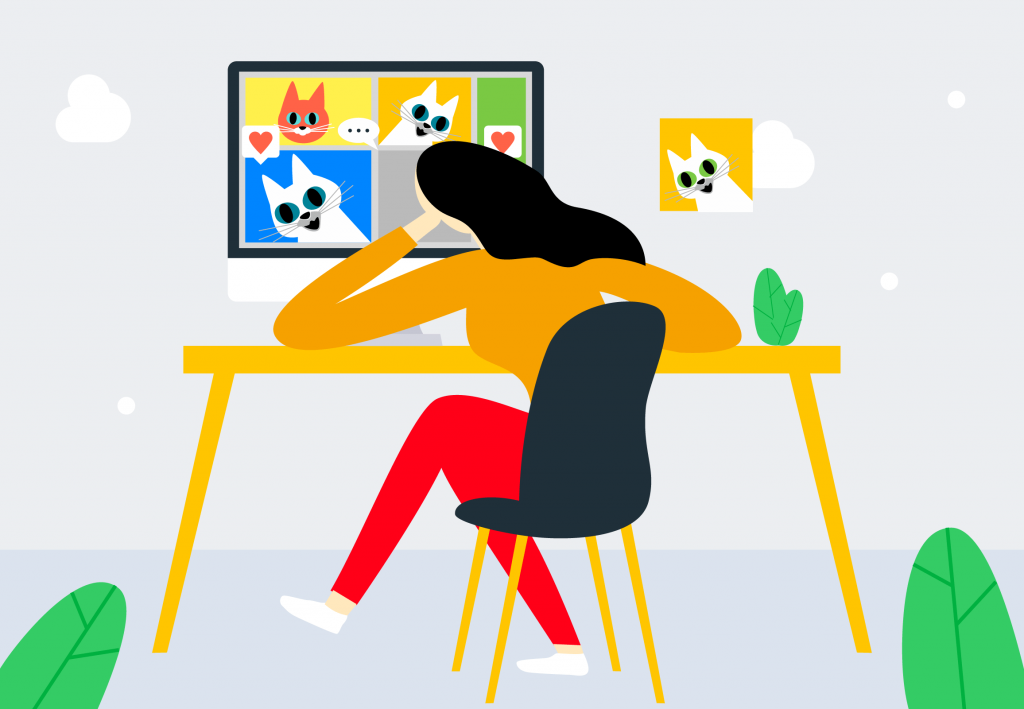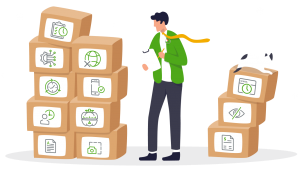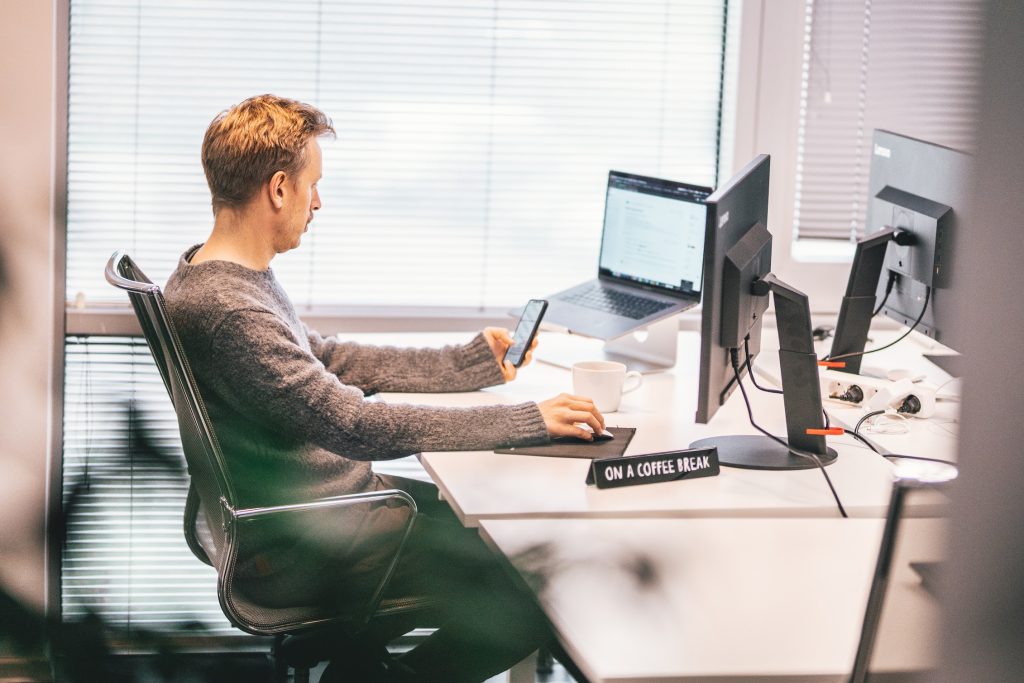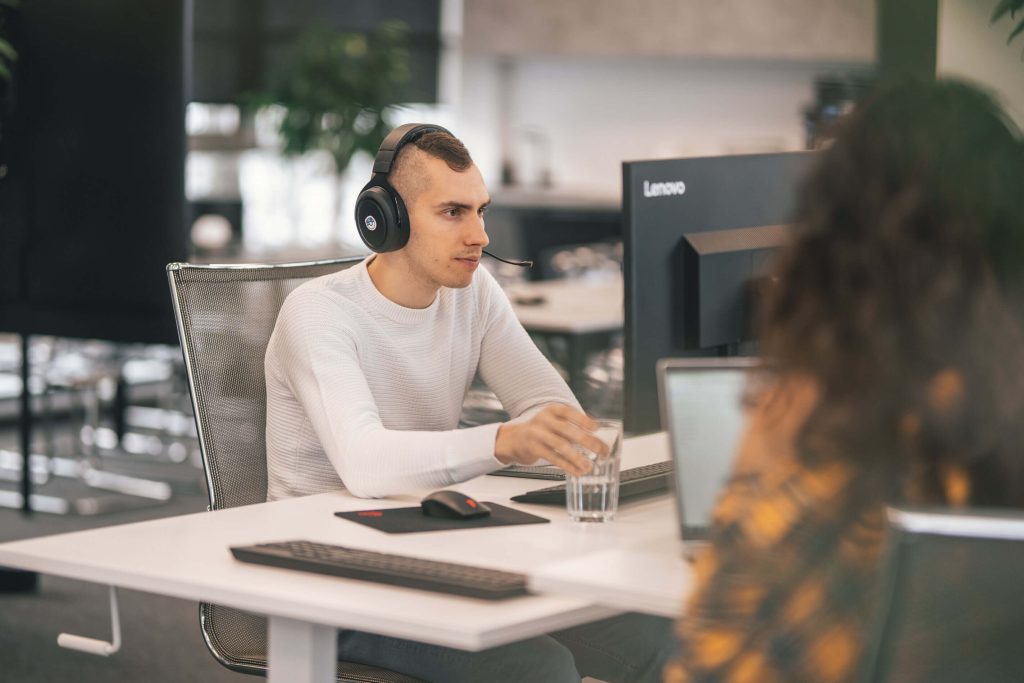Office distractions: DeskTime’s study uncovers the biggest focus thieves

Let’s talk about office distractions. When was the last time you had a 100% productive 9-to-5 workday? Or when did you last experience a day without any workplace distractions?
I’m betting that these days don’t occur very often, or maybe they don’t occur at all.
But why?
It’s a myth that we can maintain peak productivity throughout the workday. Workplace distractions are ubiquitous, challenging sustained focus even in ideal conditions like a quiet, device-free room.
While there’s no magic productivity formula, pinpointing the culprits behind office distractions is essential for overcoming them. To that end, DeskTime embarked on a mission to identify the most common workplace distractions worldwide.
Want to get the most out of your time?
Try DeskTime for free!
Try free for 14 days · No credit card required.
By signing up, you agree to our terms and privacy policy.

The results
To learn top office distractions, DeskTime created a survey asking: “What distracts you most when you’re at work?” Respondents were given several answer options to choose from. Here’s what we discovered after surveying 1334 office workers from various industries and roles:
- The most common office distractions were interruptions caused by colleagues, such as questions, unexpected visits, and urgent tasks.
- The runner-up distraction was office noise – discussions, chatter, typing, sneezing, phone calls, etc.
- The third most popular answer was the internet, or, more specifically, getting lost in it.
Here’s a comment from one of the respondents on unwanted communication with colleagues: “Random questions that require an immediate response are distracting. When that happens too often, it adds to my unproductive time.”
Additional office distractions reported by employees were:
- Phone and desktop notifications,
- Personal and relationship issues (including interpersonal relationships at the office),
- The wrong temperature in the office,
- Email,
- Bad lighting,
- Cluttered desks and disorganized office spaces,
- Meetings,
- Music (ambient music, office radio, etc.).
The study results suggest that workplace conditions influence productivity significantly more than individual employee characteristics. While personal relationships are mentioned as a potential internal factor, the data primarily highlights the importance of the work environment.
Thus, the question “Does the work environment affect productivity?” can be answered with a resounding “yes” based on DeskTime’s survey findings.
How distractions affect productivity
Being distracted at work and struggling with productivity is common. In fact, according to this survey, 70% of employees face workplace distractions. But how exactly do distractions affect your productivity? We decided to turn to science for answers.
The essential reason we cannot maintain focus when facing a distraction is that our flow of cognitive processes is disrupted. Our cognitive resources are limited. Distractions deplete these resources, and we experience difficulty focusing on the task at hand.
Moreover, being distracted when working is similar to switching between tasks, which demands significant mental effort. The more we deal with task-switching, the less mental capacity we have, which is why our productivity suffers.
Another scientific reason we cannot jump back into full-speed productivity after being distracted is that distractions can gradually shorten our attention span. The more frequently we face interruptions at work, the greater the chance of our attention span shortening, making it increasingly difficult to concentrate on complex tasks. This phenomenon, combined with the cognitive overload caused by distractions, creates a perfect storm for decreased productivity and increased stress.

Invite structure in your workday!
Our all-in-one time management solution works wonders.
How to avoid distractions at work – tips and tricks
Now that we’re familiar with some examples of workplace distractions (including those identified by DeskTime’s study) and are aware of the potential effects of distractions at work, it’s just about time to learn how to avoid distractions at work. Here are a few tips we encourage you to try for yourself.
Set up a “do not disturb” sign

As the DeskTime study identified interruptions caused by colleagues as the most common office distraction, this first tip directly addresses this issue.
Setting up a “do not disturb” sign might seem a bit extreme initially, but it’s surprisingly effective. This approach can be implemented both in physical and virtual workspaces, clearly communicating to colleagues when you’re unavailable for casual conversations.
You can purchase a dedicated “do not disturb” sign for your desk, simply write a message on paper, or use cool tools designed for this purpose. It’s essential to inform your team about this practice to avoid misunderstandings. By establishing clear boundaries, you can significantly reduce interruptions and enhance your focus.
Minimize background noise

It’s a fact that background noise can affect your performance at work. From your co-workers conversing too loudly to a loud sneeze at the other end of the room or the new Taylor Swift album, you’re dying NOT to hear.
So, what can you do about it? First, you can look for a quieter place at the office. If that’s impossible, you can purchase solid noise-canceling headphones and enjoy music that helps you concentrate (or use the noise-canceling functionality for some quiet).
When it comes to productivity-boosting sounds, it’s a matter of opinion. However, research has found that gaming music holds immense productivity-boosting potential. Check out this article, where we’ve gathered some advice on the best gaming soundtracks for work.
Tidy up and declutter your workplace

Clutter creates stress. If your work table is a mess, overflowing with papers, coffee mugs, and miscellaneous knick-knacks, it can interfere with your focus and drain your energy. There’s a reason for the saying “tidy desk, tidy mind.” A cluttered environment creates visual noise, constantly begging for your attention.
Start by removing all the things on your table that you don’t need for the current task. Every piece of clutter is a potential distraction, and minimizing unnecessary items creates a calmer, more conducive work environment. Once you’ve achieved a clean slate, consider implementing an organizational system. There are plenty of tips for workspace organization online, like this helpful video guide for home office setups:
A clutter-free workspace can lead to a clutter-free mind, boosting your productivity and overall well-being.
Turn off notifications

The endless pings, alerts, and pop-up windows seriously disrupt one’s focus. Whenever a notification appears, we are tempted to see what it says – that’s just how we’re wired to function. Hence, the very least you can and should do to increase productivity at work is turn off unnecessary notifications.
Some pings are necessary, and that’s true. Luckily, you can set up apps to allow essential notifications.
Another thing you should consider to help deal with office distractions is using website blockers—especially if you’re commonly a victim of web-surfing rabbit holes. Try blocking social media on your computer and see if it helps with productivity.
Remember, every time you get distracted, it takes your brain about 23 minutes to refocus on the task.
Take regular breaks (yes, you read this correctly)

While taking a break to deal with office distractions may seem counterintuitive, it’s actually a great hack. Regular breaks during your workday are known to boost your productivity and improve focus. Hence, the better your focus is, the easier it will be to maintain.
Breaks allow you to recharge your mental battery a bit so you can return to dealing with tasks more energized. Plus, you can use your breaks for small talk with your colleagues so they don’t have to disturb you during your deep focus phase.
There are plenty of ways to integrate regular breaks into your workflow – the Pomodoro technique, time-blocking, the 52-17 rule, and more. Give them a try and pick whatever works for you.
Don’t let office distractions wreck your productivity
Office distractions are a persistent challenge, but they don’t have to be unbeatable. By understanding the common culprits, implementing effective strategies, and cultivating a focused work environment, you can significantly boost your productivity and become more resistant to workplace distractions.
Remember, small changes can lead to significant improvements. Eliminate unnecessary interruptions and reclaim your focus. Your productivity and overall job satisfaction will thank you.
Did you find this article useful? Give it a clap!
Psst! You can clap more than once if you really loved it 🙂